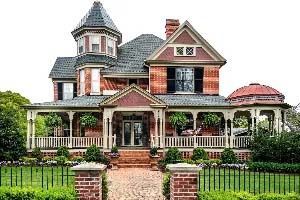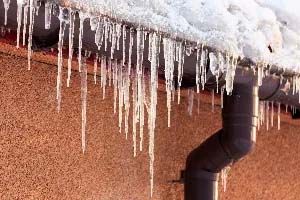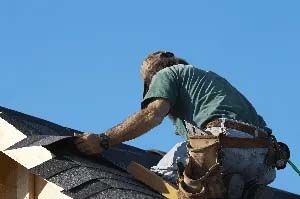The Period-Authentic Roof: Materials to Match the Roof Style of Your Historical Home
The Period-Authentic Roof: Materials to Match the Roof Style of Your Historical Home

On a modern house, replacing the roof is often simple. Many homeowners choose the ever-popular asphalt shingle-it's practical, less expensive, and reliable. When you're restoring a historical home, though, matching the style and materials of the original architecture can really provide the "wow" factor for your curb appeal.
Here's what you need to know about what roofing materials are available for restoration and how you can know you're choosing the best one for your home's style and for your budget.
Know Your Style
Modern roofs are mostly functional, especially those of development homes that share the same easy-tobuild design. Historical homes, however, even when sharing similar blueprints, have unique character, and the roof shares in the aesthetic design. Roofs from the past are the "crown" of the home, and lines and features of each roof style reveals the home's architectural period.
Common historic roof styles include:
Spanish. Spanish-style homes typically feature clay shingles. The roofs are almost flat and are characteristically reddish, and they complement the simple symmetry of Spanish design.
Victorian. Victorian roofs were typically finished with wooden or slate shingles. The roofs themselves have features like rounded domes, turrets, and dormers. The eaves often have decorative trim. Scalloped or stylized shingles are not uncommon.
French. French-style homes have steep roof lines that run parallel to the horizontal lines of the house. The contrast is always in the roof color, which is much darker than the warm, tan plaster exterior common to French-inspired homes. The most common shingle type is wood.
Dutch Colonial. Dutch Colonial roofs are distinctive. They look similar to a barn roof, but they have square dormers to allow for proper headroom on the interior. The lines of this roof are quite steep.
Federal. Federal roofs accompany clean exteriors with simple gables that are neither too steep nor too shallow. The roof perfectly matches the symmetry you can expect from Federal-style homes.
Medieval and Gothic. A steep, pointed gable over the central entrance is a common feature. These roofs often have several gables, but they mirror each other. No part of the exterior is irregular.
Craftsman. Craftsman homes feature clean lines and simple building styles. Most roofs have exposed rafters, wooden shingles, and a shallow pitch. A large dormer is often used to increase space on the top level.
When you know your home's style, you can begin to appreciate how the roof is meant to be just as important as any other visual feature of your home's original charm.
Know Your Materials
Wood is often the default shingle of choice for historic homes, but in some areas and for some budgets, wood simply is not practical. If you're restoring a Craftsman or Dutch Colonial house, the best choice is wood. But there are some other shingle materials to consider for different styles.
Slate. While the initial investment is high, there is no better choice for Victorian or Gothic homes that feature steep gables. These roofs are made to be admired. The colors of natural stone can vary in the roof, providing visual interest. Slate lasts decades with proper maintenance.
Metal. Some Federal- and Colonial-style homes will look perfectly restored with a simple metal roof. For fancier homes, copper is the best choice. For homes that have a more rustic, farmhouse feel, choose tin or steel. These can be painted to give an aged patina look, with traditional crimped edges to give the "lined" look of historic roofs.
Asphalt. Yes, asphalt shingles could still work for your home. But instead of the typical shingle, ask your roofing company about custom or specialty shingle shapes. For example, the scallops that were common on Victorian homes can be mimicked with asphalt.
Rubber. Rubber roofing is a fairly new product, but it can be made to look like slate or even smooth wood shakes. Since rubber roofing is made from recycled tires, it is a cost-effective alternative to real slate or wood.
Clay or cement tiles. These can be made to look like slate and will match the architectural style and color of nearly any old house.
For more information on choosing a period-authentic roof for your historic home, contact us at Eagle Exteriors.

CONTACT US
Contact Us
We will get back to you as soon as possible.
Please try again later.
Areas Served
O'Fallon, MO · Saint Charles, MO · St Peters, MO · Wentzville, MO · Chesterfield, MO & All Surrounding Areas



